The names are listed alphabetically by surname. In brackets are the names as they appear on the memorial – occasionally errors occur on memorials.
Great War 1914-18
Alfred John Bendall
Private Alfred John Bendall, 10969, 8th Battalion, Devonshire Regiment, was the son Thomas and Fanny Bendall nee Ball of Alveston, Bristol. By 1891, Thomas, an agricultural labourer, had brought Fanny and their six children to South Wales. Initially to the Rhondda Valley where they resided in Blaencwm at the top of the valley. A decade later Fanny was head of the family and living at 1 Bristol Terrace, Brithdir with daughter Matilda and sons Alfred John, Albert, Edward, Charles and Thomas. At the time of his attestation Alfred John Bendall was living in Aberdare; he enlisted at Neath. After intensive training in England his battalion landed at Le Harve on 25th July 1915 joining 20 Brigade, 7th Division on 4th August – the first anniversary of the outbreak of the war. Pte Bendall and the 8th Battalion’s first engagement was at the Battle of Loos (25 September-18 October 1915). The Battalion suffered heavy casualties but Alfred John Bendall survived. But was killed in action on the 9th Nov 1915 when the Battalion was in the line in the Givenchy sector. His brother Thomas died on the Somme a year later.
[Research by Roy Smith]
Alfred John Bendall (Bendall J. Pte.)
Private,10969, 8th Battalion, Devonshire Regiment.
Killed in action November 9 1915, Aged 38
Gorre British and Indian Cemetery, Pas de Calais, France, Grave: I.C.12.
Thomas Bendall
Thomas Bendall, the younger brother of Pte A. J. Bendall was born c.1888 in Thornbury, Gloucester. At 13 years of age he worked in the mine alongside four older brothers. In August 1907, at the age of 19 years, he attested at Cardiff for the militia and joined the Welsh Regiment 3rd Battalion as Private 5264. After 49 days of drill he was transferred to the South Wales Borderers and given the new number of 9772.
Pte Bendall and the 2nd Borderers were stationed in Tientsin, China at the outbreak of hostilities. He was one of a small number of Borderers who took part in the Siege of Tsingtao, the first British-Japanese operation against German forces in World War One. The Germans had been granted a 99-year lease on Tsingtao in 1898 and had built a port and naval base garrisoned by 4,000 troops. In September 1914, 23,000 Japanese soldiers, assisted by 1,000 British soldiers and 500 soldiers of the 36th Sikhs attacked the German garrison. Despite being outnumbered the enemy held out for ten weeks before finally surrendering on the 7th November.
With the port’s capture the Borderers were withdrawn and despatched back to the UK, embarking at Hong Kong on 4th December and landing at Plymouth on the 12th January 1915. On March 17th the 2nd battalion attached to 87th Brigade, 29th Division embarked at Avonmouth for operations at Gallipoli and served on the peninsula for the duration of the campaign. The division made the first landing in April 1915 and was among the last to leave being evacuated from Gallipoli in January 1916. They were moved to Egypt before being sent to France in March. Thomas, who by now had been promoted to Sergeant, arrived with the division at Marseilles and moved to concentrate in the area east of Pont Remy between 15th and 29th March. The Division remained on the Western Front for the remainder of the war. Sgt T. Bendall was killed in action fighting on the Somme on the 21st Oct 1916. He has no known grave; his name is commemorated on the Thiepval Memorial Pier and Face 4A.
[Research by Roy Smith]
Thomas Bendall (Bendall T. Pte.)
Sergeant, 9772, South Wales Borderers.
Killed in action October 21 1916.
Thiepval Memorial, Somme, France, Pier and Face 4 A.
Harry Bennett
Harry Bennett, Sergeant, 23914, Welsh Regiment, was the son of John and Sarah Bennett of Devon. His father, John, a farm labourer of Hemycock, brought Sarah and infant daughter Lucy to Wales in 1880, where he initially found employment as an agricultural labourer on Upper Garnhill farm, near St. Andrews village in the Vale of Glamorgan, before moving into the east Gwent coalfield. Harry was born in Llantarnam, where his father worked as a coalminer at the local Henllys colliery. The family came to Brithdir prior to 1910 and lived at 4 Salisbury Terrace.
Harry, the eldest of six, enlisted at Bargoed and joined the Welsh 15th Battalion which was attached to the 114th Brigade, 38th [Welsh] Division. The Division landed in Le Havre, France during December 1915 and remained in France and Flanders throughout the war. Sgt Bennett died of wounds received fighting on the Somme on 10th May 1918 and is buried in Varennes Military Cemetery, France. Grave Ref: II. K. 6.
On the day he died the 15th Welsh were advancing on Aveluy Wood behind a creeping artillery barrage but it was soon realised that the barrage was falling short right on top of the Welshmen and the attack was called off. The attack had cost the battalion a lot of good men. Twenty men died that day, and a further three died of their wounds over the coming days.
[Research by Roy Smith]
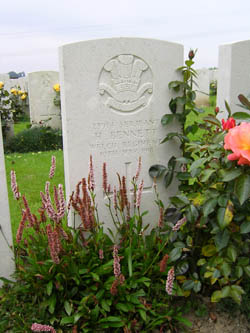
Harry Bennett (Bennett H. Sgt.)
Sergeant, 23914, Welsh Regiment.
Died May 10 1918.
Varennes Military Cemetery, Somme, France. Grave: II. K. 6.
Butler W. Ab. Not identified
Jeremiah (Jerry) Connelly
Private Jeremiah Connelly was 20 years of age when he lost his life serving with the Welsh Regiment at Gallipoli; his name is commemorated on the Helles Memorial in Turkey (Panel 140 to 144).
Jeremiah Connelly, known as Jerry, son of Irish immigrant John Connolly and his wife Mary Foley, was born in Dowlais in the parish of Merthyr Tydfil in 1895. Named after his paternal grandfather the young Jerry spent his formative years in Victoria Street, Dowlais. By 1911, his mother Mary had died and his father John had moved to Brithdir with four of his children taking up residence at 6 Herbert Street. Jerry, at age 16, was the eldest and was employed underground as a labourer; his siblings Maggie 13, Agnes 11 and John 10 were all at school.
He enlisted at Dowlais into the Welsh Regiment and joined the 8th Battalion as Private 12054. Formed at Cardiff the battalion moved to Park House Camp, Tidworth attached to 40th Brigade in 13th (Western) Divison. They were at Chiseldon in October and Bournemouth in December. In January 1915 the 8th became the Pioneer Battalion to the 13th Division. In February they moved to Aldershot.
The battalion embarked at Avonmouth on 15th June 1915 for Mudros Bay on the Greek Island of Limnos which was the main staging post for the Gallipoli landings. The Battalion War Diary for the period tell us: “his battalion had landed on Anzac Cove at 2.00 am on August 4th and they bivouaced at Shrapnel Gully, before moving on to Chailak Dere on the night of 6th/7th August. There they bivouaced on Rhododendron Ridge for the night; the following day they moved in to support the Gloucester and Wellington Regiments in their attack on Chunuk Bair. Advancing in daylight, they came under fire from their flanks while they attempted to deploy. Upon reaching forward positions, the 8th Welsh dug in and suffered even more casualties from Turkish machine-guns and snipers situated in overlooking positions.” The Welsh lost 157 men killed that day of 8th August, none of whom were afforded the luxury of a grave. At roll call the following morning, over 270 men were reported as missing! Jerry Connolly’s Medal Card confirms that he was one of those reported “missing, presumed dead, on 8th Aug 1915”.
[Research by Roy Smith]
Jeremiah (Jerry) Connelly (Conolly J. Pte.)
Private, 12054, Welsh Regiment.
Died August 8 1915, age 20.
Helles Memorial, Turkey (including Gallipoli), Panel 140 to 144.
Ivor Coles
Ivor Coles, was the son of John and Rhoda Coles formerly of 7 Salisbury Terrace, Brithdir. Although CWGC have his name on the Gravestone as T Cole this is a due to a transcription error made when the stone was set up.
[Research by Roy Smith – see also Gelligaer Journal 23]
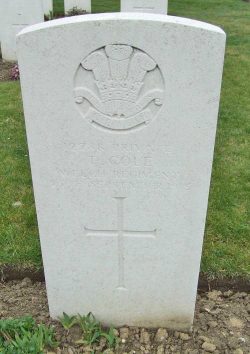
Ivor Coles ( Coles I. Pte.)
Private 12788 Welsh Regiment, 9th Battalion.
Killed in action September 25 1915.
Grave VIII. C. 20., Vieille-Chapelle New Military Cemetery, Lacouture, Pas de Calais, France.
Son of John and Rhoda Coles, 7 Salisbury Terrace, Brithdir.
T. Davies
T. Davies, possibly Thomas Davies, son of John and Miriam Davies residing at 4 Station Terrace, Brithdir in 1911. No other details as yet.
[Research by Roy Smith]
Davies T. Pte. – Not identified
William Davies
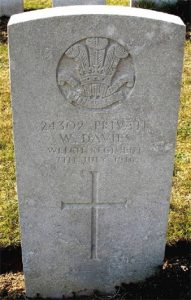 William Davies was born in Blaenavon 1880. He was the son of Thomas, an iron miner who was originally from Morriston, and his wife Ann, who was a native of Brecknockshire. His father Thomas died in 1892 leaving Ann a widow with three young children to support, Elizabeth, Thomas and infant Matilda. William at age twelve became the main wage earner. Sometime after the family moved to Brithdir and made their home at 10 James Street. William joined the TA and served in the Boer War for which he received the Queen’s South African Medal (QSA) and the King’s South African Medal (KSA). To receive the QSA medal meant he was in South Africa prior to the death of Queen Victoria on 22 January 1901 and the KSA medal was awarded only to those troops who fought in 1902, and who had served for 18 months before the war ended in May 1902.
William Davies was born in Blaenavon 1880. He was the son of Thomas, an iron miner who was originally from Morriston, and his wife Ann, who was a native of Brecknockshire. His father Thomas died in 1892 leaving Ann a widow with three young children to support, Elizabeth, Thomas and infant Matilda. William at age twelve became the main wage earner. Sometime after the family moved to Brithdir and made their home at 10 James Street. William joined the TA and served in the Boer War for which he received the Queen’s South African Medal (QSA) and the King’s South African Medal (KSA). To receive the QSA medal meant he was in South Africa prior to the death of Queen Victoria on 22 January 1901 and the KSA medal was awarded only to those troops who fought in 1902, and who had served for 18 months before the war ended in May 1902.
At the outbreak of the First World War, William rejoined the colours, enlisting at Bargoed in November 1914 into the newly formed Cardiff City Battalion of the Welsh Regiment. He was appointed to ‘D’ Company as Private 24302. The battalion had been formed at Porthcawl and in December 1914 moved from Porthcawl to Colwyn Bay as part of 130th Brigade, 43rd Division. The next eight months was spent in North Wales, before moving to Winchester in August 1915 with other units of the 38th (Welsh) Divison.
On the 7th July 1916 the 16th (Cardiff City) battalion experienced major losses in the Battle for Mametz Wood. Most of these casualties occurred when the battalion came under heavy machine gun fire from Flatrion Copse and Sabot Copse. Their casualties were so bad they were forced back. They made two more attacks but the position was much too exposed for any hope of success and orders were received to cease operations. Battalion Losses : “6 Officers killed, 6 wounded, 268 Other Ranks killed, missing and wounded.” One who died was Private William Davies, he was thirty seven.
His commanding officer, Eddie Williams, sent his condolences to the family in the form of a beautifully decorative scroll which reads: “It is with feelings of deepest regret I have to inform you of the Death of Private W. Davies. My Platoon, which formed the front line of the attack on Mametz Wood, was practically wiped out. The men followed me gallantly, and it was cruel to see them before the hail of bullets. They gave their lives cheerfully for the dear Homeland and the folks at home.” William was one of thirty killed that day who were laid to rest in Flatiron Copse Cemetery (his grave being Plot X, Row E, Grave 7). The only comfort for loved ones back home was knowing he had a grave as the majority of those lost that day have no known grave and are commemorated on the Memorial to the missing at Thiepval.
[Research by Roy Smith]
William Davies (Davies W. Pte.)
Private, 24302, Welsh Regiment.
Died July 7 1916.
Flatiron Copse Cemetery, Mametz, Somme, France, Plot X, Row E, Grave 7.
Stephen Davies
Corporal Stephen Davies, 241090, 5th Battalion, Welsh Regiment is among 2,515 Commonwealth soldiers buried in the Jerusalem War Cemetery. Stephen was born in Llanelly, Carmarthenshire in 1891, the son of Stephen & Annie Davies. He married Gertrude Davies, in 1909, a native of Blaenavon, Davies being both her married name and maiden name. On the 1911 census, they were listed, with their 14 month old daughter Iris Edna, in the home of Albert Henry Price at 27 Birchgrove Terrace, Tirphil. Sometime later they moved to Brithdir. Before enlistment he was employed at Bargoed Colliery.
The 5th Battalion was at Gallipoli until December 1915 when they moved to Egypt. The battalion, part of 159 Brigade, 53 Division was involved in operations in the Jordan Valley at the time of his death. Cpl Davies was killed in action on March 10, 1918. The task of the Welch Regiment that day was to clear an area called Chipp Hill where they became heavily engaged with the enemy which resulted in two officers and twenty-five other ranks being wounded, and eight other ranks being killed including Cpl Davies. At the time of his death, Gertrude and four children resided at 26 James Street, Brithdir.
[Research by Roy Smith]
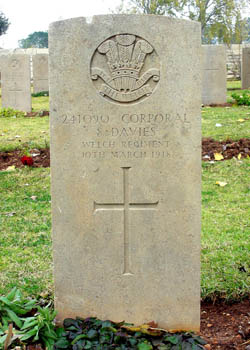
Stephen Davies (Davies S. Pte.)
Corporal, 241090, Welsh Regiment.
Died March 10 1918.
Jerusalem War Cemetery, Grave L 17.
Benjamin Evans
The military record for Private B. Evans has not been located; however a family member confirmed that he was named Benjamin, the eldest of seven children born to coalminer Joseph Evans and his wife Mary. Joseph of Risca, Monmouthshire and Mary, a native of Dowlais, Merthyr Tydfil parish, married in 1877. Shortly after, they moved to the West Riding of Yorkshire, where son Benjamin was born in 1878; his birth being registered in the district of Hunslet. By 1890, the family was back in Wales, first in the coal mining communities of Mountain Ash and Treherbert in the Rhondda Valley, where two more sons were born. By 1894 they had moved to the Rhymney Valley and settled in Brithdir. Four of their children were born in the family home at Bristol Terrace.
[Research by Roy Smith]
Benjamin Evans – not identified
Frederick Godley
Frederick Godley, of 1 Salisbury Terrace, Brithdir, attested on 26th October 1914 at New Tredegar at the age of 37 and enlisted for the duration of the war. He joined the Welch Regiment, 13th Battalion as Private 21560 and embarked for France on 2nd December 1915. On 23 June 1916 he joined 38th Infantry Base Depot (IBD) at Etaples. The IBD was a holding camp and kept the men in training while awaiting posting to a unit at the front. From July his duty was with 3rd Army Head Quarters at St. Pol. On 11th October he was employed with the 6th Corps Head Quarters in the field. Pte Godley was granted leave to Britain over the festive period and enjoyed Christmas at home. On the 11th October 1917, he was transferred and posted to 275 Area Employment Company Labour Corps and allotted a new regimental number 368047. The men of the corps undertook any labouring task required of them. They built and repaired roads and railways, built defences, laid electricity and telephone cables, moved ammunition stores and buried the dead. Private Godley died of wounds he received as a result of enemy aircraft bombs on the 5th December 1917.
Frederick Godley was born c.1872 in Deptford, London, the son of Elizabeth & William Godley, a marine engineer. In 1881, his father William was 1st Engineer on board the steam ship Kirstall, docked at Middlesborough; Elizabeth and children, including 9 year old Fred, were residing in the town, at 21 Willow Street. In 1891, Frederick, listed as fireman, was a crew member on board the vessel ‘Kirkstall’ berthed at Newport Docks. His father, William, was enumerated as the chief engineer. The following year Fred married Mary Emma Rossiter of Bristol, at Newport Registry Office. They were living on Durham Road, Newport, when the 1901 census was taken, Fred being a brickyard labourer. By 1907, Fred, now working as a collier, had relocated the family to New Tredegar, but they son moved to Sun Row, Troedrhiwfurch. The family moved to Brithdir after 1911.
[Research by Roy Smith]
Frederick Godley (Godley F. Pte.)
Private, 21560, Welsh Regiment.
Died December 5 1917.
Duisans British Cemetery, Etrun, Pas de Calais, France, Grave V.D.28.
William Gummer
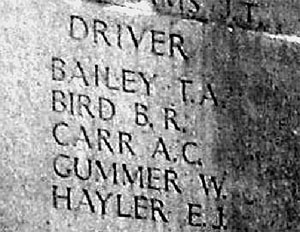 William Gummer at age 15 worked as an agricultural labourer at Tir y Ferch Gryno Farm, Brithdir, in the employ of Mary Thomas. His father Samuel Gummer, a native of Herefordshire, moved the family to Brithdir, circa 1884, living first at 11 School Street, where William was born in 1885. By 1901, the family had moved within the village, to Church Villa. Coming from an agricultural background and being used to horses possibly led to William’s selection for the role of Driver in the Royal Horse & Field Artillery.
William Gummer at age 15 worked as an agricultural labourer at Tir y Ferch Gryno Farm, Brithdir, in the employ of Mary Thomas. His father Samuel Gummer, a native of Herefordshire, moved the family to Brithdir, circa 1884, living first at 11 School Street, where William was born in 1885. By 1901, the family had moved within the village, to Church Villa. Coming from an agricultural background and being used to horses possibly led to William’s selection for the role of Driver in the Royal Horse & Field Artillery.
His service record has not survived so piecing together his time in the army has been a somewhat perplexing endeavour. From his number it is likely he was a reservist who had signed up late 1905/early 1906 for a 3 year term plus 9 years in the reserve. Mobilized in August 1914, he enlisted at Cardiff, joined the Royal Field Artillery, and was posted, as Driver 40015, to 37th Brigade Ammunition Column.
His medal card shows he was awarded the 1914 Star and clasp indicating he had been under enemy fire in the first months of the war – as he would have been with 37th Brigade who had a fair number of casualties in 1914. The 37th Brigade Ammunition Column joined the 7th Division Artillery from IV Corps Artillery on 24th June 1915 and served in France until it was abolished on 15th May 1916, two and half months before his death. It is uncertain how he came to have died in India; one explanation might be that he was transferred to a unit in India after his unit was abolished, and that he died from disease or sickness prior to being placed on the strength of his new unit
William Gummer died on 1st Aug 1916. He is remembered with honour on the Kirkee 1914-1918 Memorial which stands in the Kirkee War Cemetery, Bombay, India. The image of Kirkee Memorial Face B included courtesy of Paul Nixon and by permission of Steve Rogers, TWGPP.
[Research by Roy Smith]
William Gummer (Gummer W. Pte.)
Driver, 40015, Royal Field Artillery.
Died August 1 1916.
Kirkee 1914-18 Memorial, India, Face B.
Arthur William Hallett
Arthur William Hallett was the son of Benjamin and Hannah Hallett of Eastville, Bristol. Details from ‘Soldiers Died in the Great War’ show he enlisted at Cardiff and joined the Royal Field Artillery as Gunner 80597. The Commonwealth War Graves show him as attached to ‘D’ battery 64th Army Brigade when he was killed in action on 10th Jun 1917, age 24. He is buried in the Reninghelst New Military Cemetery, Poperinge, West-Vlaanderen, Belgium. Grave II.D.23.
[Research by Roy Smith]
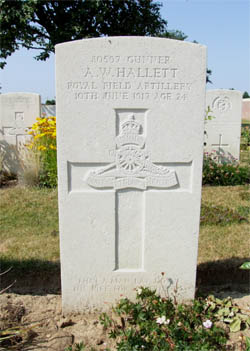
Arthur William Hallett (Hallet A. Gnr.)
Gunner, 80597, Royal Field Artillery.
Died June 10 1917.
Reninghelst New Military Cemetery, West-Vlaanderen, Belgium, Grave II. D. 23.
Hardon S. Pte. – not identified
Alfred George James
Alfred George James, Corporal 28568 of the Welch Regiment 18th Battalion, was killed in France/Flanders, 18th Oct 1916 aged 23. He is buried in the Maroc British Cemetery, located in the village of Grenay, France, in Plot I.K.5. Born in Brithdir he was the son of the late James James and Mrs Mary Jane Mellens of 1 Charles St, Brithdir. He is also remembered on the family gravestone at Gwaleod y Brithdir Cemetery.
On the day he died the 18 Welch were in the trenches at Loos; the war diary of the 18th Welch tell us very little other than the line was heavily bombarded with trench mortars and suffered two other ranks killed. A search on CWGC tells us Cpl Alfred George James 28568 and Pte W Powell 28760 were the two casualties and they share the same grave reference; their names commemorated on the same headstone. There are hundreds, if not thousands of headstones like this in France and does not mean they were buried with another man but were buried too close together for an individual headstone.
[Research by Roy Smith]
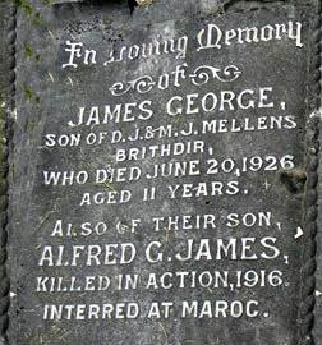
Alfred George James (James A.G. Cpl.)
Private, 28568, Welsh Regiment.
Died October 18 1916, age 23.
Maroc British Cemetery, Grenay, Pas de Calais, France, Grave I. K. 5.
Jenkin Jenkins
Serjeant Jenkin Jenkins was a local boy, born a stones throw away in neighbouring Cwmsyfiog in 1893. He was the son of David Jenkins (born Rhymney) and his wife Emma Davies (born Cwmsyfiog daughter of William Davies). The family came to Brithdir in about 1904 and settled at 28 James Street. He enlisted at Brithdir and joined the 1/5th Welsh as Pte 2870. The battalion was mobilised on 4th Aug 1914 at Pontypridd then moved to Tunbridge Wells, Sussex in the November. In February 1915 it was sent to Scotland to serve on the Forth and Tay Defences. Under orders of 159th Brigade in 53rd (Welsh) Division the Battalion sailed from Devonport on 19th July for the Dardanelles arriving at Suvla Bay on 9th August. On 11th December 1915 the battalion was evacuated from Gallipoli and moved to Eygpt. Every single Territorial Force soldier was renumbered on March 1st 1917 hence 2870 Jenkins was given the new number of 241094. His medal card tells us he was killed in action on 12th Dec 1917 age 24, and was buried in the Jerusalem Cemetery in grave M. 24. A months later Cpl Stephen Davies, also of Brithdir, was buried in the same cemetry.
[Research by Roy Smith]
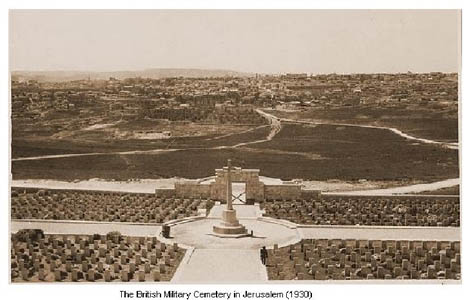
Jenkin Jenkins (Jenkins J. Pte.)
Lance Sergeant, 241094, Welsh Regiment.
Died December 12 1917.
Jerusalem War Cemetery, Grave M. 24.
William Davies Jones
William Davies Jones the son of William & Harriet Jones was the village milk vendor prior to the war. He enlisted into the King’s Royal Rifle Corps and joined 10th Battalion as Rifleman R/3531. His parents anxious for news of their son missing in action turned to the readers of the Merthyr Express on Saturday December 14, 1918.
| Tidings Wanted Mr & Mrs William Jones, 2 Ivy Row, Brithdir, would be glad if any prisoner of war from Germany could give them any tidings of their son Rifleman William Davies Jones, Kings Royal Rifles, who was reported missing on November 30th following operations at Cambrai. Rifleman Jones is 23 years of age and a letter from his officer at the time he was reported missing stated there was a possibility that he had been taken prisoner. |
He was officially declared ‘killed in action’ in the Battle of Cambrai on November 30th 1917 during a severe counter attack by the Germans. A study of ‘R’ prefix enlistments suggest the 7th or 8th September 1914 as the most probable enlistment date for William Jones. The 10th, formed at Winchester on 14th Sept 1914, came under orders of 59th Brigade in 20th (Light) Division and embarked Folkestone on 21st July 1915. His medal card tells us he arrived on 30th July, presumably part of a later draft to bring the battalion up to strength before going into the line. The Battle was fought over a two week period (20 November-4 Dececember). Cambrai, an important German garrison and railway depot was attacked on the morning of 20th November, with 476 tanks and six infantry divisions and by the end of the day the British Army had advanced over 5 miles and had for the first time broken through the hitherto impregnable Hindenburg Line. On 30th November the Germans launched their counter-attack, in two hours they had advanced over 3 miles and had infiltrated the Allied line moving in small groups of highly-skilled soldiers. The 10th Kings Royal Rifle Corps on the right, and near Lateau Wood, had a horrific morning. Storm Troopers covered by the mist swarmed in and around them from all directions constantly taking the route of least resistance. Just twenty men from the Battalion survived the day. (GWF)
The 10th Kings Royal Rifle Corps on the right, and near Lateau Wood, had a horrific morning. Storm Troopers covered by the mist swarmed in and around them from all directions constantly taking the route of least resistance. Just twenty men from the Battalion survived the day. (GWF)
Cambrai Memorial at one end of Louverval Military Cemetery commemorates more than 7,000 service- men of the UK and South Africa who died in the Battle of Cambrai and whose graves are not known. 2283 men fell on Nov 30th alone, of which 143 were King’s Royal Rifles Corps. 61 of that number were casualties of 10th Battalion and the name of Rifleman Jones is listed among them on Panel 9.
[Research by Roy Smith]
William Davies Jones (Jones W. Pte.)
Rifleman, R/3561, King’s Royal Rifle Corps 10th Battalion.
Died November 30 1917, age 23.
Cambrai Memorial, Louverval, France, Panel 9.
Son of the late Mr. and Mrs. W. D. Jones, of 2, Ivy Row, Brithdir.
Bertie Lewis (Lewis B. Pte.)
Private, 31818, South Wales Borderers.
Died January 5 1919, age 21.
Kirkee 1914-18 Memorial, India, Face 5.
Son of James and Helena Lewis of Plas Farm, Tirphil.
Lewis T. Pte. – not identified
George Livingstone
George Livingstone, a native of Ferndale in the Rhondda Valley who came to Brithdir before 1911. On the census he was enumerated as aged 31, boarder, coal miner, in the household of Henry and Sarah Evans at 10 Nelson Terrace.
[Research by Roy Smith]
George Livingstone (Livingston G. Pte.)
Private, 18574, Welsh Regiment.
Died May 25 1915.
Ypres (Menin Gate) Memorial, West-Vlaanderen, Belgium,Panel 37.
son of late Mr and Mrs George Livingstone.
Edwin Parry
Edwin Parry of 4 Old Bristol Terrace, Brithdir, husband of Rose Ellen Price is the only Parry residing in Brithdir of suitable age to have enlisted. CWGC list just one casualty of that name and he is 14391 Private Edwin Parry, 2nd Battalion South Wales Borderers. No record exists which is specific to him but his number would suggest an enlistment date Nov/Dec 1914. The theatre of war he first served in was Gallipoli, he would have arrived 24th May 1915. The Battalion transferred to the Western Front in March 1916; they were at Amplier, northern France on April 1st when they received orders to move to Englebelmer the following day. The Battalion marched out at 13.30 to their billets in Englebelmer, arriving at 19.20 after a hard march of 15 miles. In the evening of April 3rd they moved up to the front line trenches and noted that the trenches were in a very bad state and much knocked about by trench mortar fire; something they were to experience on the 4th when heavily bombarded by two Trench Mortars. The 5th consisted of night patrols to examine wire and ground in front and rebuilding the fire trench and working in saps which had already been pushed out to a distance of 40 to 120 yards. At 21.00 on the 6th the enemy opened a heavy bombardment with minenwerfer and high explosives and shrapnel.
Private Parry was killed in the attack of April 6th and he was interred in the Mesnil Ridge Cemetery, France along with 23 other Borderers of the 2nd Battalion killed that day.
[Research by Roy Smith]
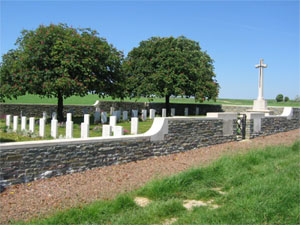
Sap: In trench warfare, the practice of digging small ‘sap’ trenches at roughly ninety degrees out from existing lines and then digging a new trench line at the front of the saps. A slow, but relatively safe, way of moving forward. Fire-trench: Front-line trench. Minenwerfer: ‘Mine Thrower’, A short range mortar used for supporting infantry attacks.
Edwin Parry (Parry E. Pte.)
Private, 14931, South Wales Borderers.
Died April 6 1916.
Mesnil Ridge Cemetery, Mesnil-Martinsart, Somme, France, Grave B. 6.
Edwin William Sidney Martin
Edwin William Sydney Martin was born 18 September 1874 in Dromore, Northern Ireland to grocer John Edgar and Mary Martin. Having qualified as a doctor he came to Wales around the turn of the century and came to Brithdir in 1903. He remained in Brithdir until he enlisted in the war in 1915. He was killed in action 15 February 1917.
For more on Dr Martin see article by Royston Smith in Gelligaer Journal Volume 21 (2014) pages 105-110.
[Research by Roy Smith]
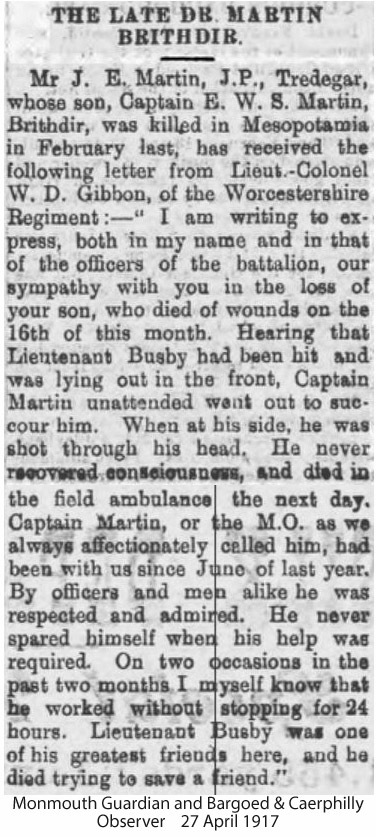
Edwin William Sidney Martin (Martin E.W.S. Capt.)
Captain, Royal Army Medical Corps, attd. 9th Bn. Worcestershire Regiment.
Died Febuary 16 1917, age 41.
Amara War Cemetery, Iraq, Grave XXI. L. 11.
Son of John E. Martin, J.P., of Ridgeway, Newport, Mon.
Charles Ernest Morgan
Private Charles Ernest Morgan, Rifleman 123, of the 1st Battalion Monmouthshire Regiment died of wounds on 24 April 1915 during the Second Battle of Ypres. The battalion landed in France on 13 February 1915 as part of 84th Brigade, 20th Division. They then moved to concentrate in the area between Bailleul and Hazebrouck. On the day Private Morgan died his unit was in the trenches in Zonnebeke sector. He was aged 25. The fighting of the 24th April marked the first day of what later became known as the Battle of St. Julien. On April 22nd, the Germans opened up on the Allied lines with an intense artillery barrage and as the barrage continued, a yellow-green cloud descended on the Allied lines. For the first time in the history of warfare, poison gas was being used. The gas, fired by the Germans, claimed many British casualties. Charles Ernest Morgan is commemorated on Panel 50, of the Menin Gate Memorial.
He was the brother of Gus Morgan (see next). The brothers were the sons of Mrs Elizabeth Morgan, proprietor of the George Inn Hotel, Brithdir. Charles was married, and prior to joining the colours worked in his mother’s Inn. Both brothers were footballers, Arthur ‘Gus’ Morgan figured prominently in Monmouthshire teams, while Charles Morgan played for Bargoed and other clubs.
[Research by Roy Smith]
Charles Ernest Morgan (Morgan C. Cpl.)
Rifleman, 123, Monmouthshire Regiment.
Died April 24 1915.
Ypres (Menin Gate) Memorial, West-Vlaanderen, Belgium, Panel 50.
Arthur Augustus (Gus) Morgan
The medal card for L/Sgt 19453 Arthur Augustus [Gus] Morgan, brother of Charles Ernest Morgan (see previous), identifies him as being killed in France on January 3rd, 1917 whilst serving with the Dorsetshire Regiment, 5th Battalion. He enlisted at Cardiff on 25th Aug 1915; initially he joined the Somerset Light Infantry, 6th Battalion, B Company, as Private 9939, and was promoted Lance Corporal on the 30th January 1915. The brothers were the sons of Mrs Elizabeth Morgan, proprietor of the George Inn Hotel, Brithdir. Charles was married, and prior to joining the colours worked in his mother’s Inn. Both brothers were footballers, Arthur ‘Gus’ Morgan figured prominently in Monmouthshire teams, while Charles Morgan played for Bargoed and other clubs.
Arthur Augustus Morgan is commemorated on the Thiepval Memorial, Pier and Face 7 B.
[Research by Roy Smith]
Arthur Augustus (Gus) Morgan (Morgan G. Sgt)
Lance Sergeant, 19453, Dorsetshire Regiment.
Died January 3 1917.
Thiepval Memorial, Somme, France, Pier and Face 7 B.
Neal A. Pte.– not identified
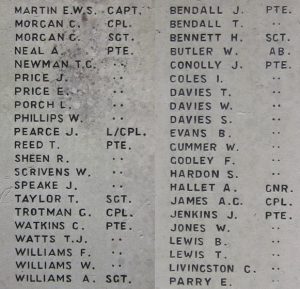
George Thomas Newman
Private George Thomas Newman was age 19 when he lost his life with the 8th Welsh at Gallipoli; he died on the same day and in the same battle as Private Jerry Connolly (see above). Born in Tredegar, he was the second of nine children of Frederick Newman, a native of Gloucester, and his wife Mary nee Evans of Tredegar. Fred and Mary married in 1893; in 1905 they were living in Field Street, Rhymney, five years later they had moved to Brithdir.
[Research by Roy Smith]
George Thomas Newman (Newman T.G. Pte.)
Private, 18342, Welsh Regiment.
Died August 8 1915, age 19.
Helles Memorial, Turkey (including Gallipoli), Panel 140 to 144.
James Pearce
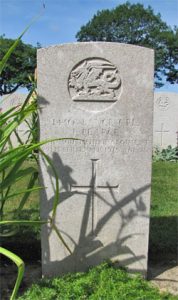
James Pearce, L/Cpl, 1430, enlisted at Blaina, the village of his birth, and joined the 3rd Battalion, Monmouthshire Regiment. He was killed in action by enemy shell fire on Sept 29, 1915 age 20 and buried at Bard Cottage Cemetery in the village of Boezinge, Belgium. He was the son of William & Cecilia Pearce of Blaina and husband of Cecilia Sheasby [formerly Pearce] of 26 James Street, Brithdir. James and his Monmouthshire Regiment embarked at Southampton on the 13th February 1915, soldiers, horses, transport and baggage boarded the S.S. Chyabassa and departed for France under the cover of darkness and the protection of the Royal Navy. At the beginning of September, the 3rd Mons was sent to the Yser Canal front just north of Ypres. The canal and the front line were below sea level in this area and flooding and mud was a constant problem. The battalion set about the construction of a series of drainage ditches to ease the problem.
There is mention of James Pearce’s death in the book ‘With Rifle and Pick’ by Janet & John Dixon:
“Consequently with the heavy shelling and trench digging in the Salient the area had reverted to a bog and the trenches were often waterlogged. The Monmouths had been set the task to relieve the waterlogged trenches. There was little chance to rest during the day for their dugouts were frequently under fire and required regular maintenance. The dugouts had been heavily shelled on the 29th September when L/Cpl James Pearce was killed and Pte Legge was wounded, whilst Pte Richard Ashton was shot through the heart on the 30th September”.
L/Cpl Pearce is buried at Bard Cottage Cemetery, Boezinge, Ieper, Belgium, Grave Ref: I.I.24.
[Research by Roy Smith]
James Pearce (Pearce J. L/Cpl.)
Lance Corporal, 1430, Monmouthshire Regiment.
Died September 29 1915, age 20.
Bard Cottage Cemetery, West-Vlaanderen, Belgium, Grave I. I. 24.
William Phillips
From his surviving papers it would appear Private William Phillips attested under the Derby Scheme. Men aged 18 to 40 were informed that under the scheme they could continue to enlist voluntarily or attest with an obligation to come if called up later on. William enlisted March 1916 in Newport. He was paid a day’s army pay for the day he attested, given a grey armband with a red crown as a sign that he had so volunteered and sent back to his home and job (coal miner) until called up. His call up did not come until April 26th 1918 when he joined the South Wales Borderers, 2nd Battalion, as Private 58597. He was posted and embarked to France on September 12th 1918 and joined the Infantry Base Depot at Rouen on September 16th. On September 18th he was compulsorily transferred to 2nd Battalion, Royal Welsh Fusiliers and given a new number 93735. He joined his new unit on September 20th. Sadly, he was killed in action on October 8th 1918, aged 20; his war had lasted 27 days. Private Phillips was the son of Albert and Mary Phillips of 16 Charles Street, Brithdir. His father, a native of Lydney, Gloucestershire was a colliery sinker and had moved the family to Brithdir before 1900.
Pte William Phillips is Remembered with Honour on the Vis-en-Artois Memorial, Panel 6. This Memorial, located in Vis-en-Artois British Cemetery, bears the names of over 9,000 men who have no known grave, and who fell, in the period from 8 August 1918 to the date of the Armistice, in the ‘Advance to Victory’. This was a series of battles fought in Picardy and Artois during the last few months of the war.
[Research by Roy Smith]
William Phillips (Phillips W. Pte.)
Private, 93735, Royal Welsh Fusiliers.
Died October 8 1918.
Vis-en-Artois Memorial, Pas de Calais, France, Panel 6.
Lewis Henry Porch
Lewis Henry Porch, Private 11019, 1st Battalion, South Wales Borderers, was killed in action on 31st October 1914 at the age of 18 years. Pte Porch hadn’t been a soldier long; his number indicates that he joined the SWB about April 1913. At the outbreak of War the battalion was at Bordon Garrison, Hampshire. The South Wales Borderers were given four hours to prepare to leave for France as part of the British Expeditionary Force. On arrival at the station, the train was waiting in the sidings, the baggage and horses were quickly entrained and they left for Southampton. The Borderers, attached to 3rd Brigade in 1st Division, landed at Le Havre 13 August 1914. One of the first British formations to move to France, the 1st Division remained on the Western Front throughout the war. Lewis was born in New Tredegar; his parents Stephen & Sidnea Porch, relocated the family to Brithdir prior to 1911 ttaking up residence at 12 Nelson Terrace. Private Porch is remembered with Honour on the Ypres Menin Gate Memorial, Panel 22.
[Research by Roy Smith]
Lewis Henry Porch (Porch L. Pte.)
Private, 11019, South Wales Borderers.
Died October 31 1914.
Ypres (Menin Gate) Memorial, West-Vlaanderen, Belgium, Panel 22.
Evan Price
E Price is believed to be Evan Price son of Rees Price (widower) of 10 School Street, Brithdir. Evan was born in 1890 in Cwmsyfiog the son of coalminer Rees Price and his wife Jane. Two years after his birth his mother Jane died, sometime later his father Rees remarried to Margaret and relocated the family to Brithdir. Evan was to join the Welsh Regiment 9th Battalion as Private 24516. He arrived in France on 26th Aug 1915, died of wounds on 2nd Oct and was buried in Wimereux Communal Cemetery. The Commonwealth Cemetery of Wimereux is unusual in that the headstones were laid flat upon the war graves because the sandy soil could not provide them with a stable footing. Also, some of the 2,847 war graves in the cemetery are the last resting places of nurses who worked in the large field hospital which was set up on the coast by the British Army during the Great War. In 1917 no fewer than ten hospitals were operating in Wimereux to care for the wounded and sick soldiers returning from the Western Front. Those who succumbed to their wounds were buried in the town’s cemetery, among them is Private Evan Price in grave I.J.31 and in grave IV.H.3 lies the body of Lt.-Col. John McCrae, author of the poem “In Flanders Fields.”
[Research by Roy Smith]
Evan Price (Price E. Pte.)
Private, 24516, Welsh Regiment.
Died October 2 1915.
Wimereux Communal Cemetery, Pas de Calais, France, Grave I. J. 31.
John James Price
| For His Country (Merthyr Express, Saturday June 8, 1918) Official announcement has been made that Pte J. Price, Welsh Regt, was killed in action in France on April 24th. He enlisted in Oct 1914 and has been in France since Dec 1915. His widow and six children live at 11 Salisbury Terrace, Brithdir |
John James Price was born in 1875 in Beaufort, Monmouthshire. By the spring of 1891, aged 17, he had moved to Mountain Ash where he worked as a collier. He married Sarah Elizabeth Butt, a native of Bath, Somerset on Christmas Day, 1894 and for the next decade they lived in 13 Napier Street, Mountain Ash where their children Margaret, William, Samuel and Henry were born. By 1908 John had relocated the family to Brithdir and they were living at 15 Charles Street where a daughter Olwen was a new addition to the family. The War was three months old when John Price attested at Cardiff on 26th Oct 1914, the next day he joined the Welsh Regiment 2nd Rhondda Battalion as Private Price 21444. The battalion moved to Rhyl, and on 28th April 1915 came under orders of the 114 Brigade, 38th Division. They moved to Winchester in August and embarked for France in December 1915.
Private Price was posted with the British Expeditionary Force and arrived in France on the 2nd December. His damaged service records tell us very little; his memorial scroll however tells us he died of wounds on 24th April 1918. The battalion war diary for April says that on the 22nd they were in action at Albert and suffered considerable casualties.
[Research by Roy Smith]
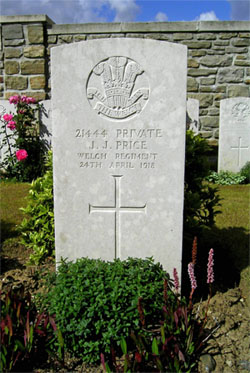
John James Price (Price J. Pte.)
Private, 21444, Welsh Regiment.
Died April 24 1918.
Millencourt Communal Cemetery Extension, Somme, France, Grave E. 41.
Thomas George Reed
Private 18614 Thomas George Reed of 13th Battalion, Welsh Regiment was killed in action on 10th July 1916 and his name is commemorated on Thiepval Memorial Pier 7a Face 10a. His details on Soldiers Died in the Great War list his birthplace as Elliots Town, New Tredegar. His father, also named Thomas, a pit sinker, was killed in an accident during sinking operations at the Powell Duffryn New Pits in February 19001. The dreadful fatal accident left his mother Ann a widow with a family of seven and Thomas George, a coal hewer at 13, the family’s main breadwinner, saving his mother from squalor.
Throughout the decade there were family marriages to celebrate; his mother Ann remarried to a William Gerrish in 1902, his eldest sister Mary Ann married William Hayes a native of Somerset, in 1903. Thomas himself married Mary Jane Edwards in 1906, and then his younger sister Sarah married Daniel Jones, son of Daniel & Ruth Jones of Bristol Terrace, Brithdir in 1907. In 1911, Thomas and Mary Jane with their three children, Mary Ann (5) Stephen (2) and infant son William Thomas were living at 17 Station Terrace, Brithdir, the home of his mother Ann Gerrish, who for the second time, was enumerated as widow.
Thomas joined the Welsh Regiment 13th (Service) Battalion (2nd Rhondda). From 28th April, 1915 the Battalion became attached to 114th Brigade, 38th (Welsh) Division, part of K4 and served alongside both the 14th and 15th Welsh in 114 Brigade. In the summer of 1915 the Battalion moved with the remainder of the Welsh Division to Morn Hill Camp, Winchester, where it completed its training and equipping, and embarked for France from Folkestone on December 5th, 1915, disembarking at Boulogne the same day. During the winter and spring of 1916 the Battalion held nearly every section of the British line from Givenchy on the La Bassee Canal to Laventie, about six miles South of Armentieres. At the end of May, 1916, the Battalion moved South with the remainder of the 38th (Welsh) Division to the Somme area, in readiness for the First Battle of The Somme, which commenced on July 1st. Private Reed was killed at Mametz Wood on 10th of July 1916, it was 38th Welsh Divisions major battle during the Somme campaign2.[Research by Roy Smith]
(1) Merthyr Express, Saturday 24 Feb 1900; (2) Steve John, Great War Forum
Thomas George Reed (Reed T. Pte.)
Private, 18614, Welsh Regiment.
Died July 10 1916.
Thiepval Memorial, Somme, France, Pier and Face 7 A and 10 A.
William Scrivens
William Scrivens was killed in action on 31st July 1917 on the first day of the Battle of Pilkem Ridge at Ypres in Belgium. Born across the Rhymney river from Brithdir in Cwmsyfiog, the son of George and Amelia Scrivens, he was a resident of Brithdir at the time of his enlistment into the Army. He attested at Newport, Monmouthshire and joined the South Wales Borderers, 10th Battalion, as Private 20868. He arrived in France on the 3rd Dec 1915 and lost his life on 31st July, aged 24. His name is commemorated on the Ypres Menin Gate Memorial, Panel 22.
[Research by Roy Smith]
William Scrivens (Scrivens W. Pte.)
Private, 20868, South Wales Borderers.
Died July 31 1917.
Ypres (Menin Gate) Memorial, West-Vlaanderen, Belgium, Panel 22.
Reginald Charles Sheen
| News has been received from the War Office that Private R. Sheen, Charles Street, Brithdir, of the 5th Batt. Welsh Regiment, has been killed in action in France. Merthyr Pioneer, 11 Sept 1915 |
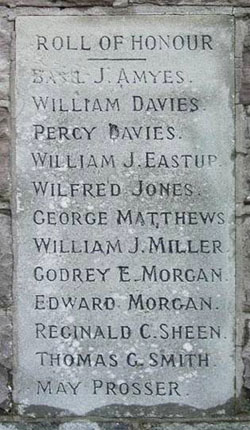
Reginald Charles Sheen (Sheen R. Pte.)
Private, 2876, Welsh Regiment 5th Battalion.
Died August 20 1915.
Helles Memorial, Turkey (including Gallipoli), Panel 140 to 144
Speake J. Pte. – not identified
Thomas Robert Taylor
Thomas Robert Taylor, Sergeant, 241100, Welsh Regiment, 1st/5th Battalion was killed in the battle of Beersheba on November 3, 1917, aged 38 and buried in Israel. He was the husband of Violet Charlotte Taylor of Salem House, Brithdir. Cardiff born, Robert was working as a collier at the age of 13 and married Violet Charlotte Wallis of West Malling, Kent, in Merthyr in 1913. He was very popular in the district being well known in boxing and football circles.
[Research by Roy Smith]
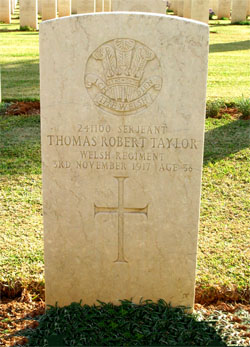
Thomas Robert Taylor (Taylor T. Sgt.)
Sergeant, 241100, Welsh Regiment.
Died November 3 1917.
Beersheba War Cemetery, Israel and Palestine (including Gaza), Grave F. 26.
Herbert Tratman
The Tratman family came to Brithdir sometime between 1885 and 1887. The name in various records does vary between Tratman and Trotman. But in the 1911 Census return the signature is definitely George Tratman.
(Trotman is of course the more common variation and seems to be preferred by officials.)
There is a problem in identifying G Trotman. There are two brothers in the Tratman family – George, born 1880, and Herbert (or Bert), born 1891.
Bert Tratman must have enlisted very early in the war as what records there are of his war service show that he first entered the theatre of war August 31st 1914. He was killed in action in September 1915. The Commonweath War Graves Commission records him as:
Herbert Tratman, Private 10912
South Wales Borderers, 1st Battalion,
Died 26 September 1915,
Commemorated Panel 52 Loos Memorial, Pas de Calais, France.
George Tratman’s surviving war service documents show he was deemed to have enlisted June 25th 1916, although he was not called up until 1918 – presumeably because he was a coal miner. He joined the Royal Field Artillery August 16th 1918 and was discharged January 27th 1919.
In 1920 he applied to get a pension as he had tuberculosis but the record states “No grounds for award”. George died in 1922.
There is no evidence of either George or Herbert being Cpl.
[Research by Roy Smith]
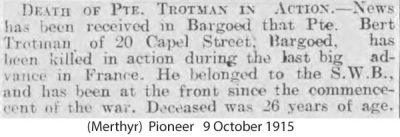
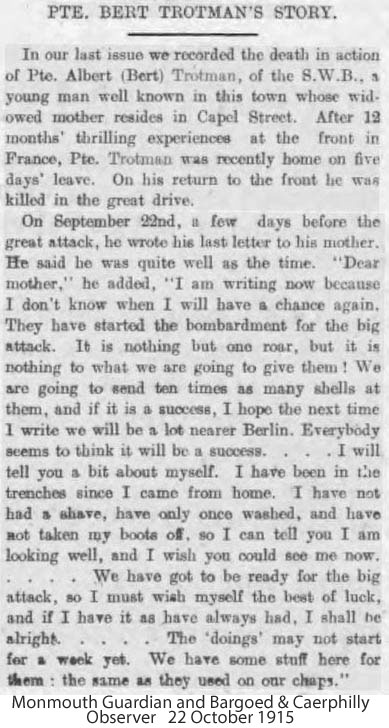
Possibly Herbert Tratman (Trotman G. Cpl.)
George Frederick Watkins
Pte George Frederick Watkins was the son of Mary Maria Watkins and the late George F Watkins of Rose Hill Cottage, Brithdir. He enlisted with his cousin David Robert Cleary, son of David and Elizabeth Cleary formerly of James Street, Brithdir. They joined the 2nd Battalion Welch Regiment. They arrived in France on the 13th August 1914. Sadly their war was not to last, killed in action within 53 days of each other. L/Cpl 10923 Cleary died at the Battle of the Aines, on Sept 14, 1914, his name commemorated on the La Ferte-sous-Jouarre Memorial, France. Pte 9525 Watkins, died on the 6th Nov 1914 in action at Ypres, Flanders. His name is commemorated on the Ypres Menin Gate Memorial. Private Watkins is the only one remembered on the Brithdir War Memorial, the memory of both however is kept alive with their details inscribed on a private family memorial stone at Gwaleod y Brithdir cemetery. David Cleary snr, a native of Pontypool, and his wife Elizabeth of Herefordshire moved to Brithdir circa 1895, with sons Charles aged 3 years and Robert aged 2 years. They lived with Walter & Rose Nash in 19 James Street where their daughters Margaret and Rose were born in 1896 and 1899 respectively. A third son they named Willie was born in 1901. By 1906 the family had moved to Bargoed to take up residence in West Street and Robert Cleary’s name is enscribed on the Bargoed & Gilfach Memorial.
[Research by Roy Smith]
George Frederick Watkins (Watkins G. Pte.)
Private, 9525, Welsh Regiment.
Died November 6 1914, age 26.
Ypres (Menin Gate) Memorial, West-Vlaanderen, Belgium, Panel 37.
Thomas John Watts (Watts T.J. Pte.)
Private, 8/15973, South Wales Borderers 8th Battalion.
Died December 15 1918 aged 26.
1747 Mikra British Cemetery, Kalamaria, Greece.
Son of John and Margaret Jane Watts (17 Charles Street, Brithdir).
Arthur Williams
Arthur Williams, the son of William and Mary Williams of the Villas, Brithdir, lost his life on the Somme. Formerly Pte 2878 The Welch Regiment, he enlisted at Brithdir into the Royal Welsh Fusiliers 4th battalion as Private 8831. On 1st Sept 1915 the 4th was transferred to the 47th (2nd London) Division as a Pioneer Battalion. During October the battalion was working in the area of Bazentin-le-Petit, it was attached to 47th Division, the 9th Division then 50th Division – mostly working to repair roads. Private Williams was killed in action on 5th Oct 1916. Arthur was the sixth child to be born in the iron making town of Blaenavon to William and Mary. The family had moved to Brithdir by 1900. He came from a well known family. His father William, a mining contractor also carried out a lot of contracting work when the new houses were built in the village. Three of his brothers were stalwarts of the community namely Israel (overman at Elliott’s Colliery), Harry (Gelligaer District Councilor), and Stan (Inspector of Mines).
Among the 72,000 names of the ‘missing’, carved on the Thiepval Memorial is Private Arthur Williams, his name set in stone on Pier & Face 4A. He is also remembered on his parents gravestone in Gwaleod y Brithdir Cemetery
[Research by Roy Smith]
Arthur Williams (Williams A. Sgt.)
Private, 8831, Royal Welsh Fusiliers.
Died October 5 1916.
Thiepval Memorial, Somme, France, Pier and Face 4 A.
Williams F. Pte. – not identified
William George Williams
Private 20953 William George Williams, X Coy, Officers Mess, Gloucestershire Regiment, fell in action at Ypres on Sept 3rd 1917 aged 21 years. He was the son of William & Elizabeth Williams of 14 Charles Street, Brithdir and is buried in France in the Villers-Faucon Communal Cemetery Extension, Grave Ref: 1.F.1. He is also remembered on the family stone in Gwaleod y Brithdir Cemetery
[Research by Roy Smith]
William George Williams (Williams W. Pte.)
Private, 20953, Gloucestershire Regiment.
Died September 3 1917.
Villers-Faucon Communal Cemetery Extension, Somme, France, Grave I. F. 1
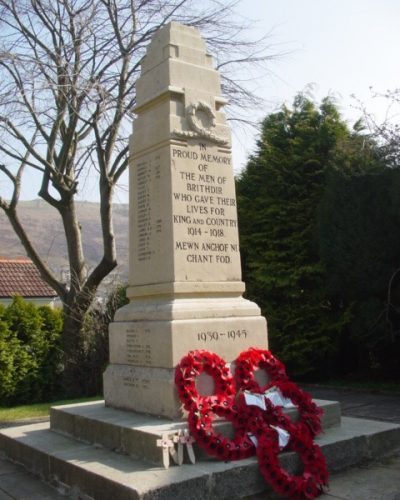
Brithdir Memorial 1939-45
Bertie William George Baker
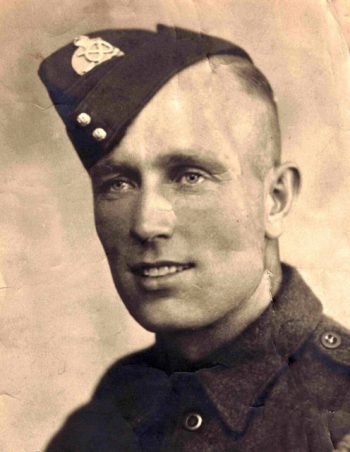
Bertie William George Baker enlisted in the South Staffordshire Regiment, but died while serving with the Durham Light Infantry 9th Battalion. He was the son of Bertie George & Bertha Baker of Gloucestershire and husband of Lorraine Baker, nee Bevan, of Brithdir.
[Research by Roy Smith]
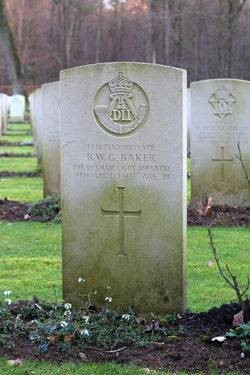
Bertie William George Baker (Baker G. Pte.)
Private 14767330 Durham Light Infantry, 9th Battalion.
Died April 4 1945, aged 29.
Grave 55. B. 13., Reichswald Forest War Cemetery, Nordrhein-Westfalen, Germany
Edward Brewer
Edward Brewer, a despatch rider, was accidently killed when he lost control of his motorcycle. He was riding from Staithes to Whitby in Yorkshire, carrying despatches when the accident occurred. He is buried at Llandudno where his wife lived. His parents were from Brithdir.
[Research by Roy Smith]
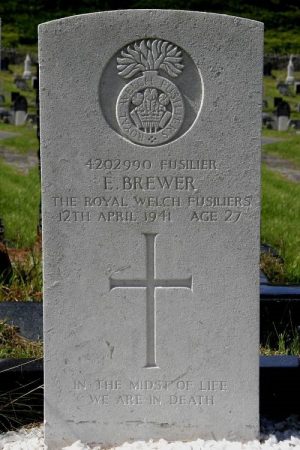
Edward Brewer (Brewer E. Pte.)
Fusilier 4204990 Royal Welch Fusiliers 12th Battalion.
Died April 12 1941, aged 27.
Buried Section O, Grave 12, Llandudno (Great Orme’s Head) Cemetery, Caernarvonshire.
Son of Sylvanus and Margaret Brewer; husband of Winifred Brewer, of Llandudno.
Trevor Butts
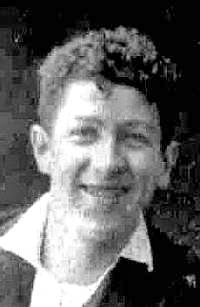
Trevor Butts, son of Herbert James and Ethel Butts, was defending Hong Kong from the Japanese when his battery position at Pak Sha Wan was hit by an enemy shell. As well as being commemorated on Sai Wan Memorial in Hong Kong he is also remembered on his parents grave in Gwalod y Brithdir cemetery.
(See also Brithdir, Yesteryear in an upper Rhymney Valley Community by Royston Smith pp 238-239.)
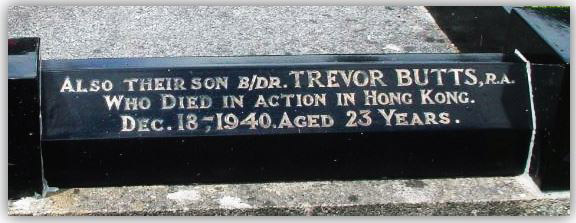
Trevor Butts (Butts T. Pte.)
Gunner 1492701 Royal Artillery.
Died December 18 1941, aged 23.
Commemorated Column 3., Sai Wan Memorial, China (including Hong Kong).
Son of Herbert James Butts and Ethel Butts, of Brithdir.
John Thomas Ferguson
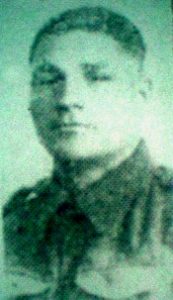 Corporal John Thomas Ferguson was killed in action August 12 1944. He had successfully attacked a machine-gun post and was returning with a prisoner when they were both killed by enemy fire. A letter from his officer states: he was a good NCO, excellent in battle and a soldier that his family may be proud of.
Corporal John Thomas Ferguson was killed in action August 12 1944. He had successfully attacked a machine-gun post and was returning with a prisoner when they were both killed by enemy fire. A letter from his officer states: he was a good NCO, excellent in battle and a soldier that his family may be proud of.
During 19 years service he had been in India, Singapore, Shanghai and other parts of the Far & Middle East and had been recalled to his unit a few days prior to the war. His wife Mrs L Ferguson lived with their four children at 1 Milton Terrace in Brithdir and his mother, Emilie Cooper (she had remarried), at 4 Nelson Terrace. His younger brother Thomas Henry had been killed earlier in the war.
For the most part, the men buried at Banneville-la-Campagne War Cemetery were killed in the fighting from the second week of July 1944, when Caen was captured, to the last week in August, when the Falaise Gap had been closed and the Allied forces were preparing their advance beyond the Seine.
[research by Roy Smith]
John Thomas Ferguson (Fergusson J. Cpl.)
Corporal 3954925 Welch Regiment 1/5th Battalion.
Died August 12 1944, aged 37.
Buried Grave V. C. 26, Banneville-La-Campagne War Cemetery, Calvados, France
[Brother of Thomas Henry below]
Thomas Henry Ferguson (Fergusson T. Pte.)
Private 3959703 Welch Regiment, 1st Battalion.
Died May 27 1941, aged 23.
Grave 3. A. 16. Suda Bay War Cemetery, Greece.
Son of Emily Cooper, of Brithdir.
[Brother of John Thomas above]
William Thomas Hill
Petty Officer William Thomas Hill had nine years service, with time on the aircraft carriers Eagle and Furious before going to the Far East in 1939 on H.M.S. Dragonfly – a Locust Class river gunboat. During the Second World War, Dragonfly with its sister ships Scorpion and Grasshopper was tasked with securing the Chinese rivers as part of the gunboat squadron operating from Shanghai, China. They were withdrawn and sent to Singapore after the Japanese forces invaded China. Japanese forces invaded Malaya just after midnight on December 8 1941 (local time, just prior to Japan’s attack on Pearl Harbour). Completely taken by surprise, British forces along the length of the Malay Peninsula were overrun. On January 31, the three ships successfully evacuated the 1,500 men of the brigade to Singapore. However, Singapore itself was soon to fall and Dragonfly and Grasshopper left Keppel Harbour, Singapore, on February 14 1942 bound for Batavia in Java. They were immediately attacked by waves of Japanese torpedo and dive bomber aircraft in the shallow waters of Rusuk Buaja Island east of Sumatra. Both ships were lost in the action. Dragonfly, having been heavily damaged, sank with a loss of 40 lives including that of Petty Officer Hill.
He was the son of Mr Benjamin Hill and the late Mrs Rose Hill of Rock House, Brithdir. His wife, a native of Plymouth, also resided at Brithdir.
[Research by Roy Smith]
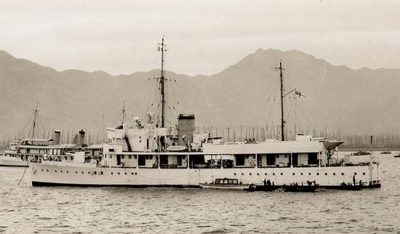
William Thomas Hill (Hill W.T. P.O.)
Petty Officer Stoker D/KX 83585 Royal Navy H.M.S. Dragonfly.
Died February 14 1942.
Commemorated Panel 69, Column 1, Plymouth Naval Memorial, Devon
Howells J. Pte. – not identified
John Griffiths Jenkins
John Griffiths Jenkins, son of Lewis and Sarah Jenkins of Brithdir, was killed 24 April 1945 when his Spitfire, aircraft EN666, crashed near to the Corner Piece Inn, on the Fishguard Road three miles north of Haverfordwest, whilst serving with 8 Coastal Operation Training Unit. He was buried Gwaelod y Brithdir Cemetery, as later was his mother.
[Research by Roy Smith]
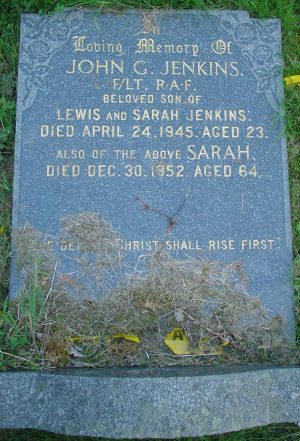
John Griffiths Jenkins (Jenkins J.C. F/Lieut.)
Flight Lieutenant (Pilot) 124463 Royal Air Force Volunteer Reserve.
Died April 24 1945, aged 23.
Buried Section B. Grave 3836., Gwaelod-y-Brithdir Cemetery.
Son of Lewis J. Jenkins and Sarah Jenkins, of Brithdir.
Clement Idris Jones (Jones C.I. Pte.)
Private 3912662 Souh Wales Borderers, 1st Battalion.
Died June 19 1942, aged 28.
Commemorated Column 62., Alamein Memorial, Egypt.
Son of Charles and Harriet Jones; husband of Amelia Jones, of Brithdir.
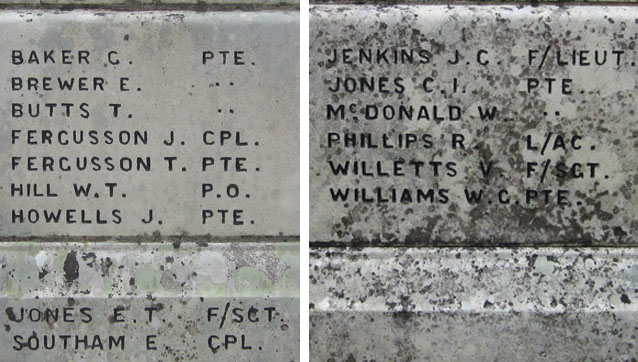
Ernest Thomas Jones
Flight Sergeant Pilot Ernest Thomas Jones of Brithdir was an extra crew member on Lancaster LL752 as Second pilot accompanying an experienced crew on a mission to see how they worked together, before starting operations with his own crew. The bomber took off on the night of May 11 1944, from RAF Mildenhall in Suffolk for a raid on the railway yards at Leuven [Louvain] in Belgium. This aircraft was one of a force of 110 aircraft [105 Lancasters and 5 Mosquitoes] as part of the extensive operations carried out to destroy and disrupt German supply and transport facilities in preparation for D-Day.
Four Lancasters were lost including LL752 which was shot down by a Luftwaffe night-fighter, piloted by Oberleutnant, Hans-Heinz Augenstein whilst outbound and crashed after midnight at 00.30 hours onto the Brouwerstraat, to the northwest of Leuven. All the crew were killed and all were buried there in the Leuven Communal Cemetery.
[Research by Roy Smith]
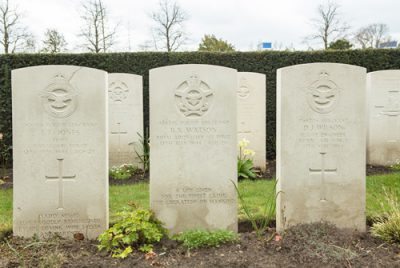
Ernest Thomas Jones (Jones E.T. F/Sgt.)
Flight Sergeant (Pilot) 570004 Royal Air Force, 15 Sqadron.
Died May 12 1944, aged 24.
Buried Row A. Grave 1., Leuven Communal Cemetery, Vlaams-Brabant, Belgium.
Son of Joseph and Margaret Jones; husband of Sylvia Jones, of Brithdir.
William McDonald
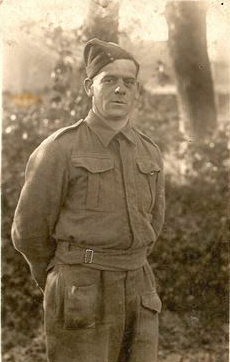
William McDonald, son of William and Mary Ann McDonald of Brithdir, died June 17 1940 and was buried in Rennes.
[Research by Roy Smith]
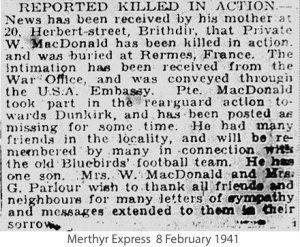
William McDonald (McDonald W. Pte.)
Private 2182010 Pioneer Corps, Aux. Mil.
Died June 17 1940, aged 38.
Buried Section 18, Plot 1, Row A, Grave 48, Rennes Eastern Communal Cemetery, Ille-et-Vilaine, France.
Son of William McDonald, and of Mary Ann McDonald, of Brithdir.
Ronald Phillips (Phillips R. L/Ac.)
Leading Aircraftman 1313723 Royal Air Force Volunteer Reserve.
Died November 20 1944, aged 28.
Buried Section B. Grave 3583., Gwaelod-y-Brithdir Cemetery.
Son of Ritchard and Claudia Phillips; husband of Gwyneth Phillips, of Bargoed.
Ernest Southam
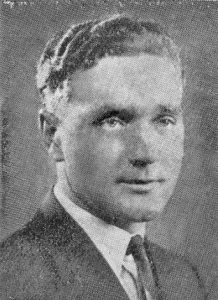 Ernest Southam married Amelia Elizabeth Williams on 2 September 1943. Ernest’s address was given as Bulford, a military camp on Salisbury Plain in Wiltshire, but his home address was 6 Greenville Road, Bloomfield, Belfast. Amelia’s address was 18 Herbert Street, Brithdir, age 19, father Evan John Williams a Colliery Surface Contractor. Less than a year after their marriage, on 23 August 1944 Ernest was killed.
Ernest Southam married Amelia Elizabeth Williams on 2 September 1943. Ernest’s address was given as Bulford, a military camp on Salisbury Plain in Wiltshire, but his home address was 6 Greenville Road, Bloomfield, Belfast. Amelia’s address was 18 Herbert Street, Brithdir, age 19, father Evan John Williams a Colliery Surface Contractor. Less than a year after their marriage, on 23 August 1944 Ernest was killed.
The 6th Airborne Division and the Belgian brigade of Colonel Jean Piron liberated Deauville 22 August 1944. However a German battery located at Mont-Canisy bombed Deauville and blew up that bridge. During the battle, 2 Belgians and 3 Britons died. Ernest was killed, hit by a mortar shell when his Company was attacked by the Germans. The Regiment War Diary states it was a very hot day deteriorating to rain, Ernest was killed between the hours of 16.40 and 17.43.
 The bridge connecting Deauville to Trouville was rebuilt and renamed Pont des Belges in their honour. This plaque at the entrance of the Touques bridge, west bank, is in honour of the three fighters of the 6th British Airborne Division 1st Battalion, Royal Ulster Rifles: Major Eric Francis Johnston, Cpl Ernest Southam and Rifleman Brendon John Scanlon who died. There is a similar plaque to the two Belgiums who died.
The bridge connecting Deauville to Trouville was rebuilt and renamed Pont des Belges in their honour. This plaque at the entrance of the Touques bridge, west bank, is in honour of the three fighters of the 6th British Airborne Division 1st Battalion, Royal Ulster Rifles: Major Eric Francis Johnston, Cpl Ernest Southam and Rifleman Brendon John Scanlon who died. There is a similar plaque to the two Belgiums who died.
[Research by Roy Smith]
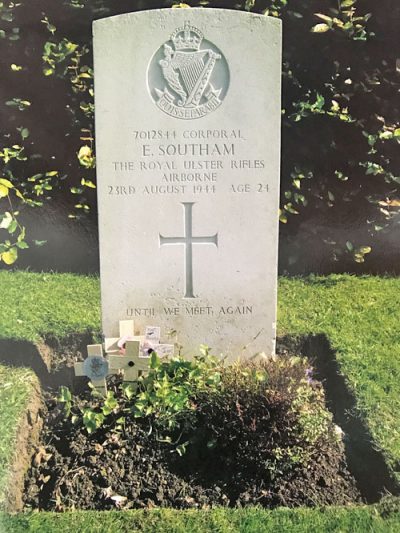
Ernest Southam (Southam E. Cpl.)
Corporal 7012844 Royal Ulster Rifles, 1st (Airborne) Battalion.
Died August 23 1944, aged 24.
Grave 7. G. 5., Tourgeville Military Cemetery, Calvados, France.
Son of Richard and May Southam; husband of Amelia Elizabeth Southam, of Brithdir.
Vivian Alquin Willetts
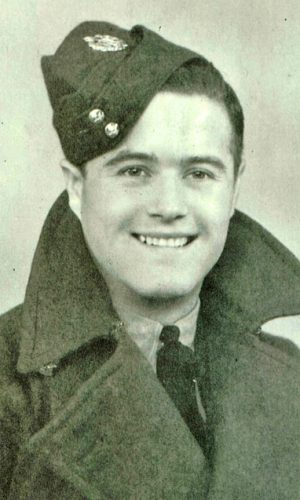
Vivian Alquin Willetts, was born 24 April 1918 at 15 Station Terrace, Brithdir, the eldest son of Phillip and Margaret Willets. He joined RAF 28 October 1939 becoming an Air Observer (navigator). On the night of 26-27 April 1942 the aircraft he was in was hit by anti-aircraft fire. Pilot Sgt John Millard survived and was taken prisoner, Wireless Operator Robert Moore was killed and buried in Bayeaux War Cemetery, but Flt/Sgt Willetts’ body was never recovered and he is commemorated on Runnymede Memorial, Surrey. He is also remembered on his parents grave in Gwaelod y Brithdir cemetery.
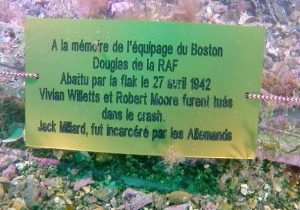
For the story of how the plane was discovered in 1966 and the memorial was placed close by see Brithdir, Yesteryear in an upper Rhymney Valley Community by Royston Smith pp 239-242.
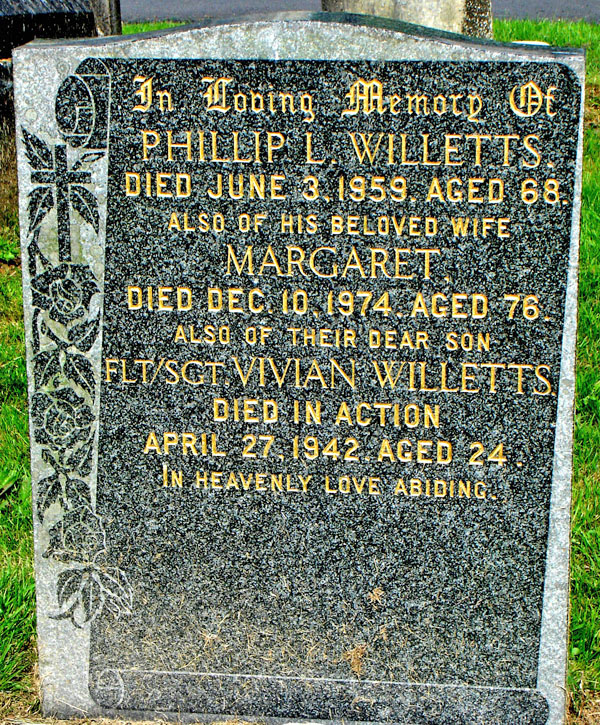
Vivian Alquin Willetts (Willetts V. F/Sgt.)
Flight Sergeant 970524 Royal Air Force Volunteer Reserve, 23 Sqadron.
Died April 27 1942, aged 24.
Commemorated Panel 76., Runnymede Memorial, Surrey.
Son of Phillip L. and Margaret Willetts, of Brithdir.
Williams W.C. Pte. – not identified
Memorial Unveiling 1930
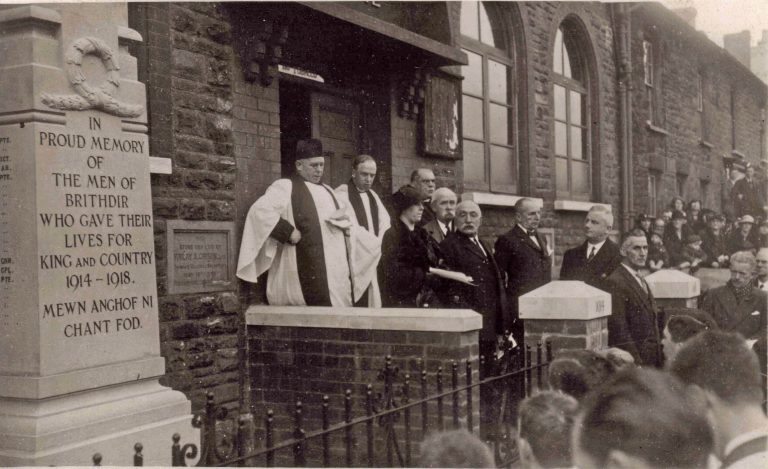
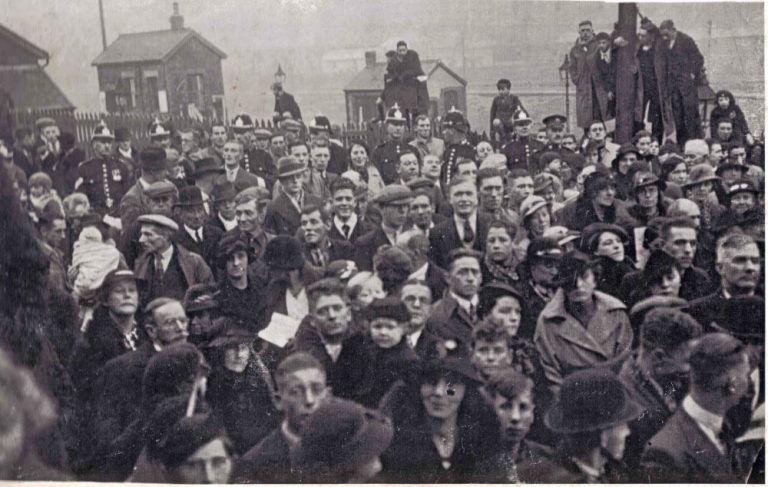
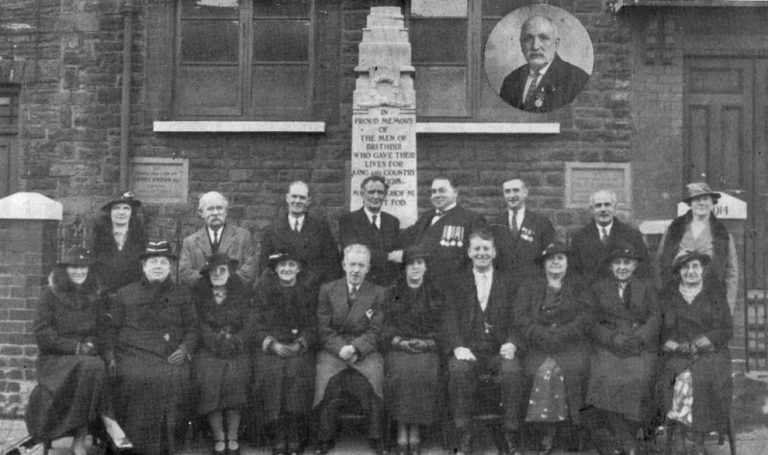
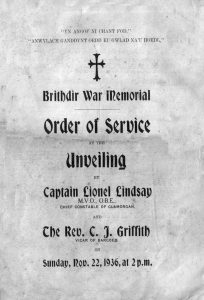 Since 1920, the sum of £87 had been held in trust for the erection of a memorial to those of the village who had made the supreme sacrifice during the Great War. In September 1930, the inhabitants felt the time was right, and a public meeting, held at the George Hotel, elected a small organizing committee to push the project forward. The committee had difficulty finding a suitable site after their preferred location at Gwaelod-y-Brithdir cemetery was denied them. Eventually they settled on a site in front of the Workman’s Library Institute building. On Sunday, November 22, 1936, in front of a large crowd, Captain Lionel Lindsay, Chief Constable of Glamorgan, unveiled the work of sculptor Mr. Griffith Evans of Treforest.
Since 1920, the sum of £87 had been held in trust for the erection of a memorial to those of the village who had made the supreme sacrifice during the Great War. In September 1930, the inhabitants felt the time was right, and a public meeting, held at the George Hotel, elected a small organizing committee to push the project forward. The committee had difficulty finding a suitable site after their preferred location at Gwaelod-y-Brithdir cemetery was denied them. Eventually they settled on a site in front of the Workman’s Library Institute building. On Sunday, November 22, 1936, in front of a large crowd, Captain Lionel Lindsay, Chief Constable of Glamorgan, unveiled the work of sculptor Mr. Griffith Evans of Treforest.
The cenotaph was moved to its present site in 1973/74. It now rests on consecrated ground where St Paul’s Church once stood. The new site situated in the centre of the village at the top of Russell Street (many old inhabitants would know it as Church Street) had lain empty for 46 years and many would agree is a much more appropriate place for the Memorial.
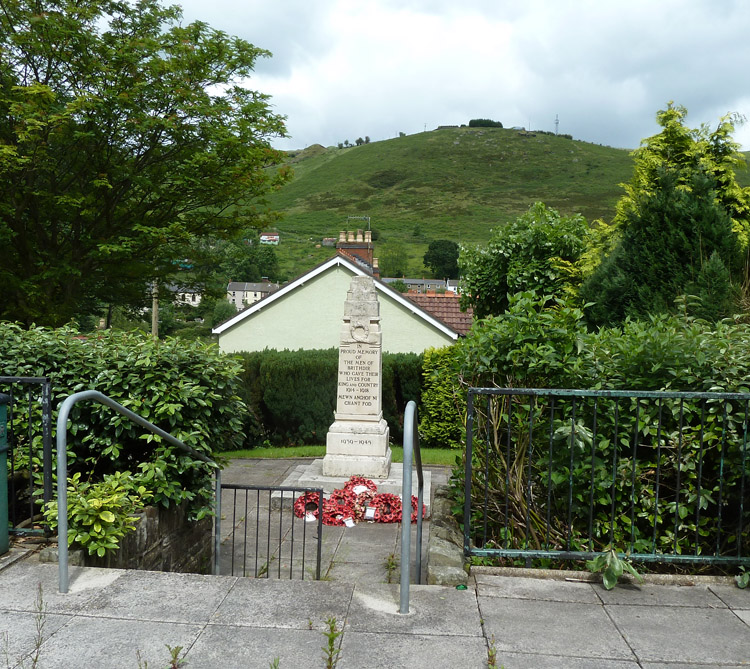
From Express Newspaper 1974:
The rededication of the Brithdir Cenotaph brought back memories for Lucy Davies, who will be 90 on Christmas Day. She is the only person still alive who was in a 1936 photograph of the Brithdir British Legion Committee. A sprightly Mrs Davies chuckled as she reminisced over the photograph and recognised herself as a forty year old, furthest left on the back row. Her husband, Thomas Davies is fourth from the right in the front row. He had been in the Royal Horse Artillery. She pointed out Mary Ann George, layer out, known because she laid out the dead in the village, who is also in the photograph. Mrs Morgan, who kept the George, the only pub in Brithdir, is also pictured.